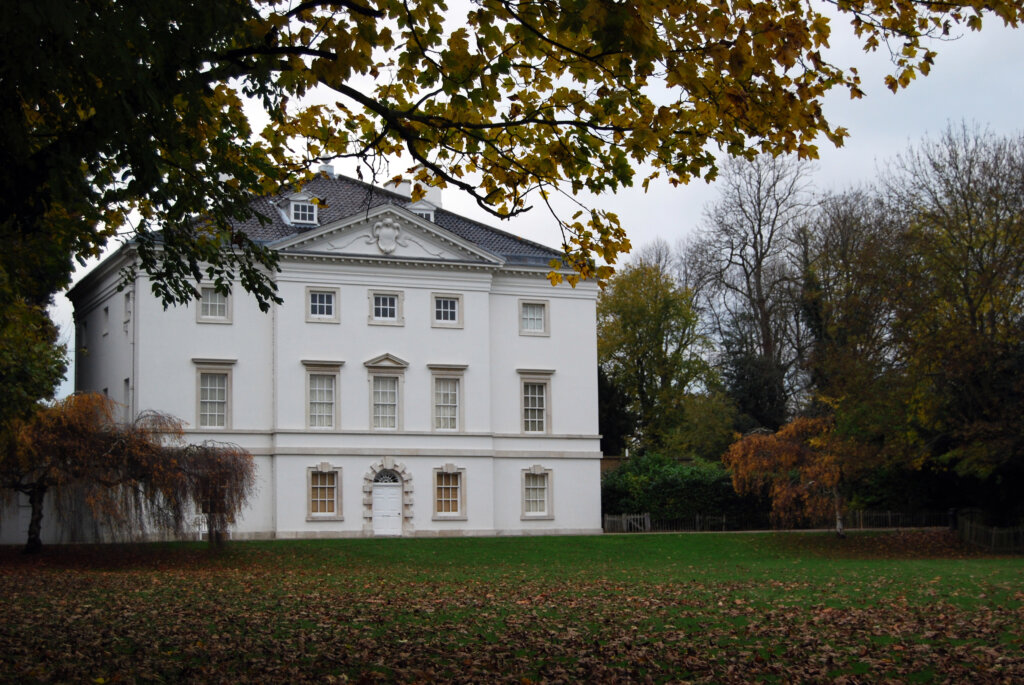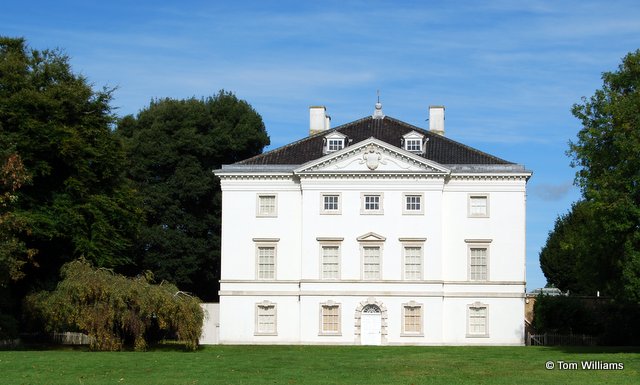I’ve just realised that I’ve hardly ever written about Marble Hill House. I’ve written a lot about the park, but hardly anything about the house itself. This is a peculiar omission, especially as I’ve started doing some volunteer work over there so I’ll be spending a lot of time in the house and may well want to write about it in the future. So here’s an instant introduction to the place.
Marble Hill House sits by the river at Twickenham – a stretch known in the 18th century as ‘the Arcadian Thames’ where a string of great houses were built along the water highway from Westminster to Hampton Court. Most are now gone, but the wonderful Jacobean Ham House on the Surrey bank still faces Marble Hill and the one remaining wing of the once splendid Orleans House is a few hundred yards further along the river on the Middlesex side.
Marble Hill House was started in 1724. It was built for Henrietta Howard, the mistress of George II. She was no passing floozy, but a professional courtier who was a Woman of the Bedchamber to Queen Caroline and was highly regarded by many of those at court as a discreet and intelligent member of the innermost royal circle.

Although she had made a successful career as a courtier, she did not particularly enjoy the life and planned to retire to Marble Hill and live quietly there. For years she was intimately involved with the design of the house and gardens.
The building is small. She did not intend to keep a large household and wanted to live in a very different style from the splendours of the Georgian court. In any case, she was short of money and building work was frequently delayed while she raised funds.
The house was built in the Palladian style, which was just becoming fashionable. Although it is small, it is exquisitely proportioned.

Building was completed in 1729 but Henrietta was not able to leave the court until 1734.
One factor that had kept her in the security of court life was her determination to avoid the attentions of her husband. She had married very young to a man who had abused and beaten her and she had sometimes had to rely on the king and queen to protect her from him. In 1733, though, he died and by 1735, free from both her husband and her royal lover, she married George Berkely, the youngest son of the Earl of Berkely and MP for Hedon in Yorkshire. She was too old to have children by then, but the couple were devoted to each other and she moved nieces and nephews into Marble Hill where they lived very happily as a family (albeit it one with a degree of coming and going among the younger family members).
George Berkely died in 1746 but Henrietta continued to live at Marble Hill until her own death in 1767. She had not only been involved in court and political life, but was the centre of an intellectual circle that included the playwright, Gay; the poet, Pope; and the novelist, Swift. Her private memoirs are regarded as one of the best guides to life in the early Georgian courts and the house at Marble Hill (the designing of which had been one of her main pleasures in her later years at court) still stands as one of the finest Palladian villas in England. (A quick Google search suggests several other contenders for this title but it is certainly a fine example.)


You’re right about its lovely proportions, Tom. A beautiful house, although small is, I know, relative. It looks big from here. I like the sound of Henrietta Howard and I wonder if there is a biography of her. I shall have to invetigate.
There is indeed a biography. There’s a review view on my blog with summary of her life : https://tomwilliamsauthor.co.uk/kings-mistress-queens-servant-the-life-and-times-of-henrietta-howard-by-tracy-borman/